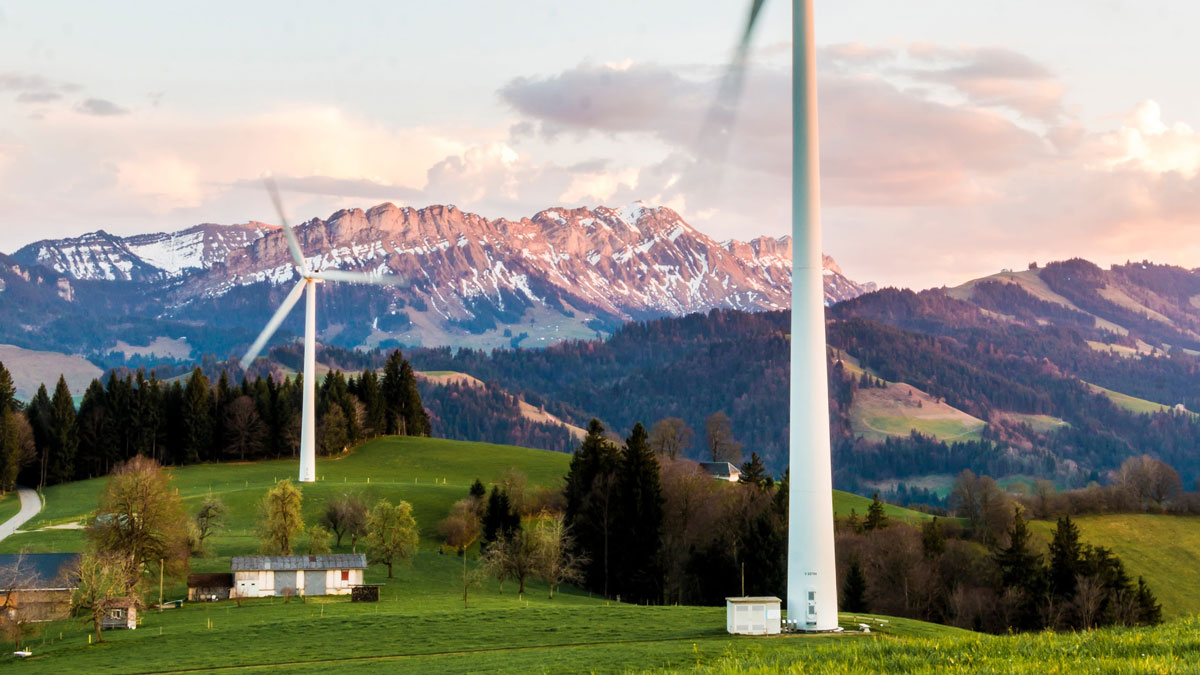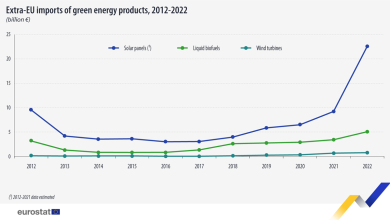Will We Enable a Just and Socially Inclusive Energy Transition in Romania?
“No person and no place are left behind in the energy transition” is the promise that the European Commission made when issuing the EU Green Deal in December 2019. This action plan envisages to make the EU’s economy sustainable by turning climate and environmental challenges in opportunities and to foster a just and inclusive energy transition where no person and no region are left behind.
The EU Green Deal covers 9 policy areas (biodiversity, sustainable food systems and agriculture, clean energy, sustainable industry, energy efficiency in buildings, non-polluting transportation, and mobility, eliminating pollution and climate action). Energy and climate policies are at the core of the EU Green Deal. The ambitions of the EU are very high and deeply transformative: achieve climate-neutrality by 2050 and reduce by at least 55% the greenhouse gases emissions by 2030, as compared to 1990 levels. Clear binding targets will be presented by the EC in the revised climate and energy legislative packages, planned to be issued in June 2021.
Financing mechanisms foreseen by the EU Green Deal
The decarbonisation of the economy is set to be achieved by investing in innovation, research, and development (R&D) which will enable the developing of new energy solutions and environmentally friendly technologies to use, store and generate green energy. At the same time, another promise of the EC is that the energy transition will be just and inclusive for all – no one is left behind. That is why, one focal point in this energy transition is in fact the solidarity with the most affected regions in Europe, heavily dependent on fossil fuels, to ensure that the EU Green Deal stands a chance of actually becoming a reality in which a bottom-up approach is implemented, and account is taken of the contributions of civil society, stakeholders and energy citizens.
Understandably, in this energy transition, the starting points of the Member States is not and will not be level, as this depends on their stage of economic development, financing and investment opportunities in low-carbon technologies and infrastructure mandatory to foster a successful energy transition. This latent gap and tensions triggered by the uneven developments between the Eastern European countries and the West is and will be most revelatory now, during the energy transition. A fair and just transition for all is the goal. Therefore, money will be made available. And a lot of money, as it seems. The time to seize funding opportunities is now!
The investment pillar of the Green Deal is known as the European Green Deal Investment Plan (EGDIP) which plans to mobilise around 1 EUR trillion in sustainable investments until 2030. The EGDIP receives around 30% from EU’s long-term budget and NextGeneration EU recovery plan, in amounts of up to approx. 555 EUR bln. In addition to that, the EGDIP receives money from the national budgets of the Member States, from public and private investments mobilised by InvestEU (the guarantor of lenders such as European Investment Bank or national banks) and the Modernisation and Innovation funds (financed from ETS trading).
The time to seize funding opportunities is now!
An important part of the EGDIP is the Just Transition Mechanism, designed at unlocking financial and technical support of around 100 bln EUR for the regions, businesses, and workers most affected by the energy transition and alleviate its socio-economic impact. The Just Transition Mechanism receives financing from the EU’s budget and NextGeneration EU, from the Member States, InvestEU, and EIB and comprises of:
- A Just Transition Fund used to provide grants (17.5 EUR bln by 2027, 7.5 EUR bln from the EU budget and 10 EUR bln under NextGeneration EU recovery plan);
- A dedicated just transition scheme under InvestEU that will crowd private investments (30 EUR bln in investments);
- A public sector loan facility of 10 EUR bln, backed by 1.5 EUR bln of the EU budget, mobilising up to 30 EUR bln in investments.
The Just Transition Mechanism is, however, more than funding. The mechanism also includes a strong governance framework and a Just Transition Platform through which the European Commission aims to provide technical assistance to Member States and investors and to ensure that affected communities, local authorities, social partners, and non-governmental organisations are involved. The EC ensures that all the Member States, and especially the regions which are most carbon-intensive in the EU or in which the occupation of the majority of the population is in fossil fuels will receive support.
The funding may be made available to the Member States by submission of territorial just transition plans (TJTPs) which will identify the regions most affected that should receive financial and technical support and should provide an outline of the energy transition process until 2030, consistent with the targets of the National Energy and Climate Plans of the countries concerned for the transition to a climate-neutral economy by 2050. The plans should also set out ways to best address social, economic, and environmental challenges, and give details on needs and measures for economic diversification, reskilling and environmental rehabilitation as appropriate.
A social and just energy transition in Romania’s coal-mining regions
The TJTPs are most relevant for carbon intensive regions in Romania, such as Hunedoara, Gorj, Prahova, Mures, Galati and Dolj. According to the preliminary analysis of the EC on the Just Transition Fund Territorial Eligibility, the regions of Jiu and Gorj (Rovinari/Turceni), along with Mures, Prahova, Dolj and Galati have been identified as facing serious socio-economic challenges during the energy transition.
In Romania, the coal-share amounts to a staggering 25% of the total energy production mix. The regions of Jiu (Hunedoara county) and Gorj are the central points of coal mining, where approximately 90% of the country’s coal mining workforce lives and works. These coal mining regions emit 90% of the GHG emissions caused by Romania’s coal fired power plants, or 30% of all Romania’s emissions stemming from mining and manufacturing. Similarly, a significant number of the workforce is employed in fossil fuel power and heat generation or energy intensive manufacturing and heavy industry (chemicals, metal processing cement, fertilisers, etc.) in Dolj, Galati, Prahova and Mures.
Clearly, considering the ambitious targets of the EC during the energy transition, a phase-out of the coal and lignite in these regions automatically means that the jobs of the workers will be endangered and that the coal economy will be put at risk while being replaced by a green and decarbonised economy of the region. While undergoing a deep transformation from a carbon-intensive region into a green one, these areas must receive financial support from the Romanian Government and the EC under the Just Transition Mechanism scheme.
The initial allocations under the Just Transition Mechanism show approximately 2 bln EUR to be allocated to Romania to support a just transition. These regions must prepare and submit their TJTPs which shall be in line with the country’s National Energy and Climate Plan (link). The Romanian Ministry for EU Projects (link) has been established by the Romanian Government as the lead authority in implementing and coordinating the development of the TJTPs in Romania, ensuring transparency and involvement of all involved stakeholders, including the County Councils, as well as private enterprises, civil society organisations and local stakeholders. In addition, the Ministry for EU Projects has set up the Just Transition Operational Programme for the next EU budget financing period in order to streamline the money that will come to the country the Just Transition Fund. It is important that the TJTPs in Romania reflect the implementation of a bottom-up approach for the decarbonisation of the affected regions. Policy creation and the deep economic transformations of the economies in the region cannot and should not only be orchestrated at national level for a country of the dimensions and variety of Romania.
Currently, there are under public consultation the TJTPs for Hunedoara, Dolj, Gorj, Mures, Prahova or Galati counties. It would seem that a participative process at this scale had not taken place in Romania before, according to Bankwatch Romania. A study commissioned by the Romanian Ministry for EU projects has found that the role of the stakeholders and of civil society is seen to be very important during the creation of the TJTPs and less impactful in the period of implementation of these TJTPs. The involvement of the stakeholders is mandatory for a socially just energy transition based on principles of transparency, accountability, fairness, responsibility of the governments and effective monitoring.
In this respect, the EC should become a watchdog over the inclusive finalisation of these TJTPs, following public consultations and their correct implementation. According to a report of Bankwatch Romania, the Romanian authorities still do not see the coal industry’s inevitable closure by 2030 in concrete terms and are instead seeking funding to finance individual projects without a long-term integrated vision. Irrespective, the EU trends for carbon-neutrality by 2050, soon to become obligations once the European Climate law will be issued in June 2021, will become impossible to neglect or avoid. Action will have to be taken. No one should be left behind. This is why, the TJTPs for the 6 Romanian regions most affected by the energy transition shall propose that the funds may be used for repurposing projects of the already existing plants or inefficient facilities, deployment of technologies and infrastructures for clean energy, investments in small and medium enterprises, including start-ups or new firms, which may lead to economic diversifications and reconversion, investment in research and innovation, job assistance, upskilling and reskilling of workers.
For a successful energy transition, I reckon that we will not only need financing, even though fundamental, but we will require inclusivity, transparency, participation, and opportunity to become a change factor. The grand energy transition may only be achieved if we acknowledge the need to localise the energy transition and enable citizenship participation. The way in which the TJTPs are now drafted and implemented is now crucial and the gateway to access the funding under the EU Just Transition Mechanism.
Disclaimer: The views and opinions expressed in this article are those of the author’s and do not reflect the official policy or position of any other agency, organization, employer, or company.







